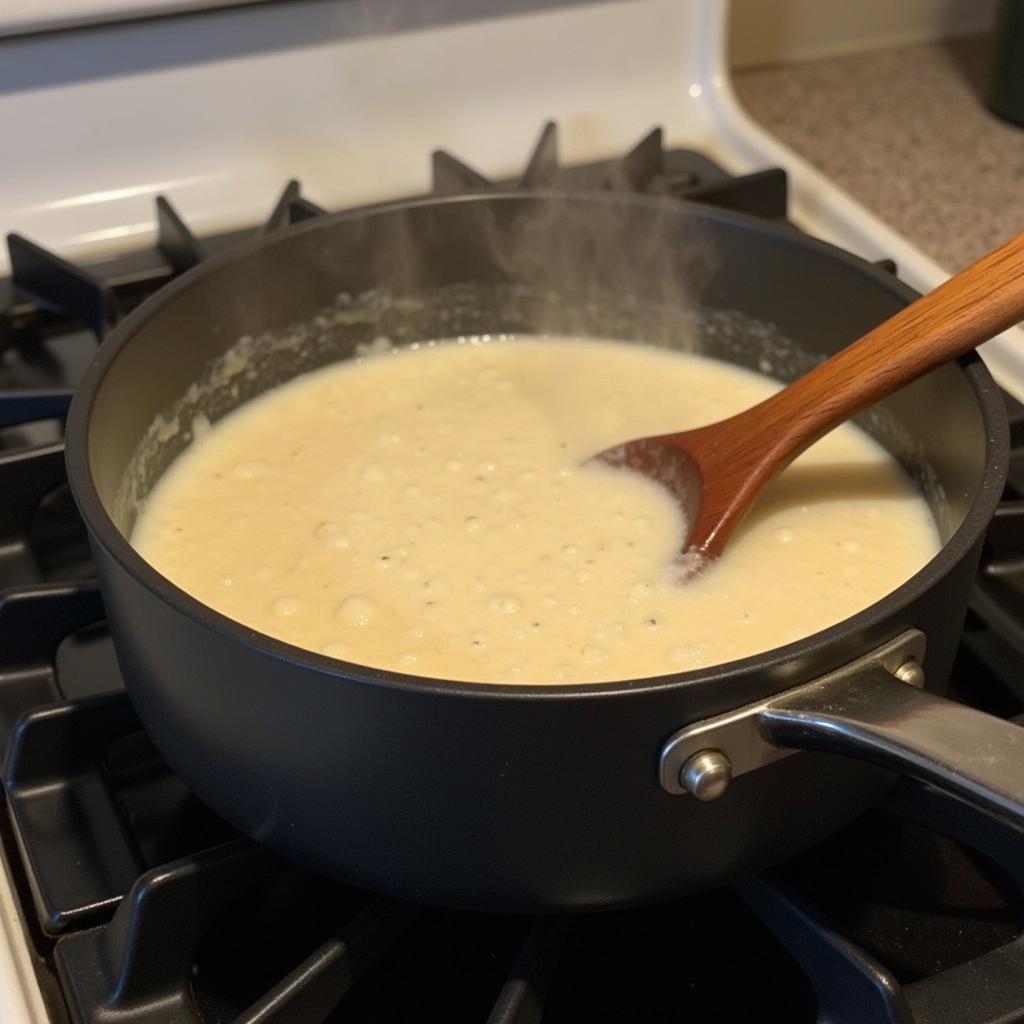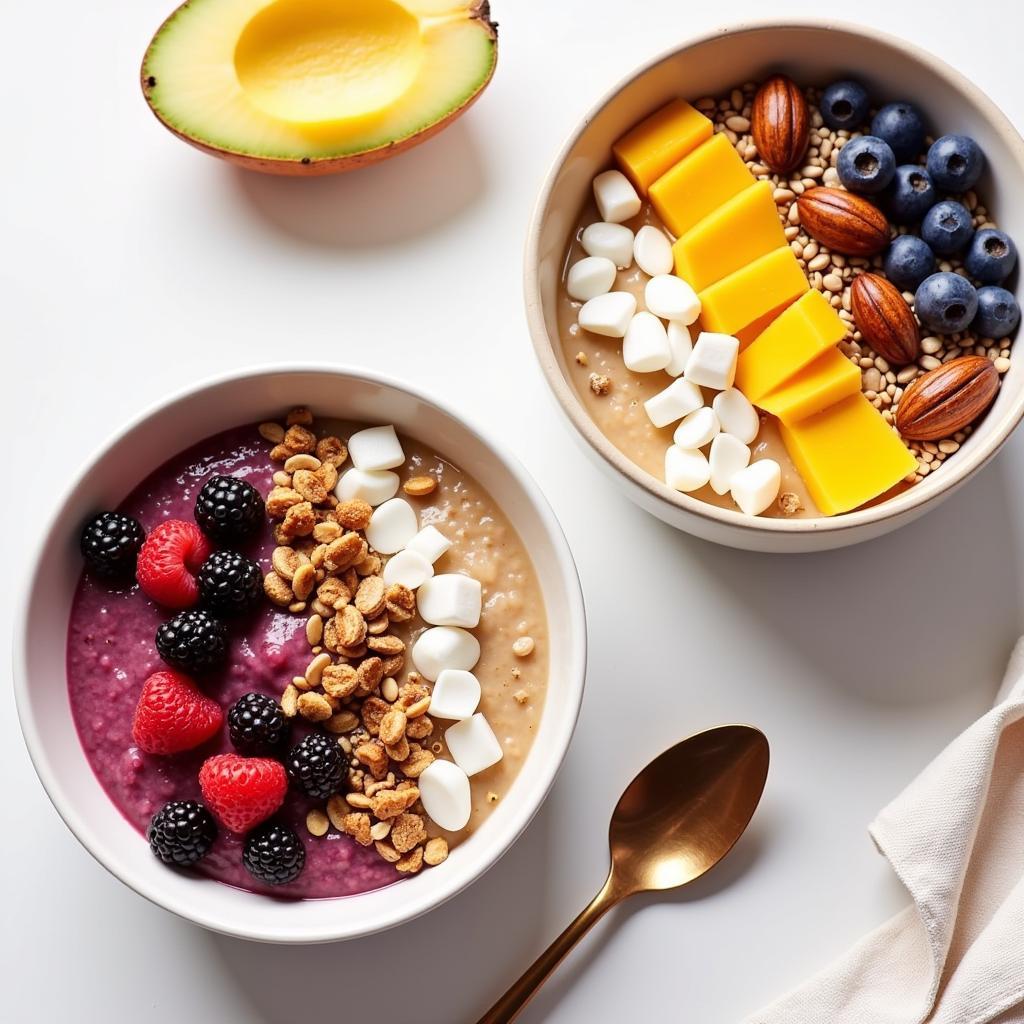Gluten-free porridge is a delicious and nutritious breakfast option for people with celiac disease or gluten sensitivity. It’s a wonderfully versatile dish that can be adapted to suit your taste and dietary needs. In this comprehensive guide, we’ll explore the ins and outs of gluten-free porridge, from choosing the right grains to creative topping ideas.
Why Choose Gluten-Free Porridge?
Traditional porridge, made with oats, is naturally gluten-free. However, oats are often processed in facilities that also handle gluten-containing grains, leading to cross-contamination. For those with celiac disease or gluten sensitivity, it’s crucial to choose certified gluten-free oats or opt for naturally gluten-free grains.
The Best Grains for Gluten-Free Porridge
Beyond oats, there’s a whole world of gluten-free grains that make fantastic porridge:
- Gluten-Free Oats: Be sure to look for certified gluten-free oats to avoid cross-contamination.
- Quinoa: High in protein and fiber, quinoa adds a nutty flavor and a slightly chewy texture to porridge.
- Rice: Both white and brown rice work well in porridge. Brown rice offers more fiber and a nuttier flavor.
- Millet: This tiny grain cooks up creamy and has a mildly sweet taste.
- Buckwheat: Despite its name, buckwheat is gluten-free and provides a slightly earthy flavor to porridge.
- Amaranth: This ancient grain is packed with protein and adds a beautiful reddish hue to your porridge bowl.
Cooking Perfect Gluten-Free Porridge
The key to creamy, delicious gluten-free porridge is the right liquid-to-grain ratio and a gentle simmer. Here’s a basic recipe:
-
Ingredients:
- 1 cup gluten-free grains of your choice
- 2-3 cups liquid (water, milk, or a combination)
- Pinch of salt
- Sweetener of your choice (optional)
-
Instructions:
- Rinse the grains in a fine-mesh sieve until the water runs clear.
- Combine the grains, liquid, and salt in a saucepan.
- Bring the mixture to a boil, then reduce the heat to low and simmer, stirring occasionally, until the grains are tender and the porridge has reached your desired consistency. This typically takes 15-20 minutes.
- Stir in your sweetener of choice, if desired.
Creative Topping Ideas
The beauty of gluten-free porridge lies in its versatility. Elevate your bowl with these delicious topping combinations:
- Fruity Delight: Fresh berries, sliced bananas, a drizzle of honey
- Nutty Crunch: Chopped almonds, walnuts, or pecans with a sprinkle of cinnamon
- Chocolate Dream: Cacao nibs, a dollop of almond butter, a few chocolate chips
- Tropical Twist: Mango chunks, shredded coconut, a squeeze of lime juice
- Spiced and Nice: Pumpkin puree, pumpkin spice blend, chopped dates
Making Gluten-Free Porridge Ahead
Save time on busy mornings by making a big batch of gluten-free porridge ahead of time. Store it in an airtight container in the refrigerator for up to 5 days. Reheat individual portions on the stovetop or in the microwave, adding a splash of liquid if needed.
Tips for Flavor and Texture
- Toast the Grains: Toasting the grains before cooking can enhance their flavor and add a subtle crunch.
- Experiment with Liquids: Use water, milk (dairy or plant-based), or a combination for different flavors and textures.
- Sweeten to Taste: Add sweetness with honey, maple syrup, agave nectar, or your favorite sweetener.
- Don’t Overcook: Overcooked porridge can become gluey.
- Get Creative with Toppings: The possibilities are endless!
Gluten-Free Porridge: A Nourishing Start
A warm bowl of gluten-free porridge is a comforting and nutritious way to begin your day. With endless flavor combinations and variations, it’s a breakfast option that never gets old.
 Gluten-Free Porridge Ingredients
Gluten-Free Porridge Ingredients
 Cooking Gluten-Free Porridge
Cooking Gluten-Free Porridge
 Gluten-Free Porridge Bowls
Gluten-Free Porridge Bowls
Frequently Asked Questions
Can I use regular oats for gluten-free porridge?
Regular oats are often cross-contaminated with gluten, so it’s best to use certified gluten-free oats.
What is the best way to reheat leftover porridge?
Reheat portions on the stovetop over low heat or in the microwave, adding a splash of liquid if needed.
Can I freeze gluten-free porridge?
Yes, you can freeze gluten-free porridge in individual portions for up to 3 months. Thaw overnight in the refrigerator and reheat as desired.
Is gluten-free porridge healthy?
Yes, gluten-free porridge can be a healthy and nutritious breakfast option, especially when made with whole grains and topped with nutrient-rich foods like fruits, nuts, and seeds.
Can I make gluten-free porridge in a slow cooker?
Yes, gluten-free porridge can be made in a slow cooker. Simply combine all ingredients in the slow cooker and cook on low for 6-8 hours or until the grains are tender.
Learn more about incorporating gluten-free grains into your diet: is grape nuts gluten free, gluten free steel cut oatmeal.
Need more gluten-free breakfast inspiration? Explore our website for a variety of delicious and easy recipes!
Have questions or need assistance? Contact us at Phone Number: 0972669017, Email: [email protected], or visit us at 142 Tran Nhan Tong, Yen Thanh, Uong Bi, Quang Ninh, Vietnam. Our customer support team is available 24/7 to assist you.